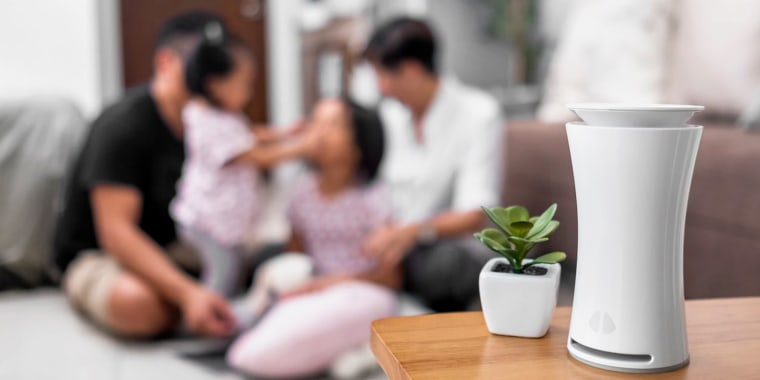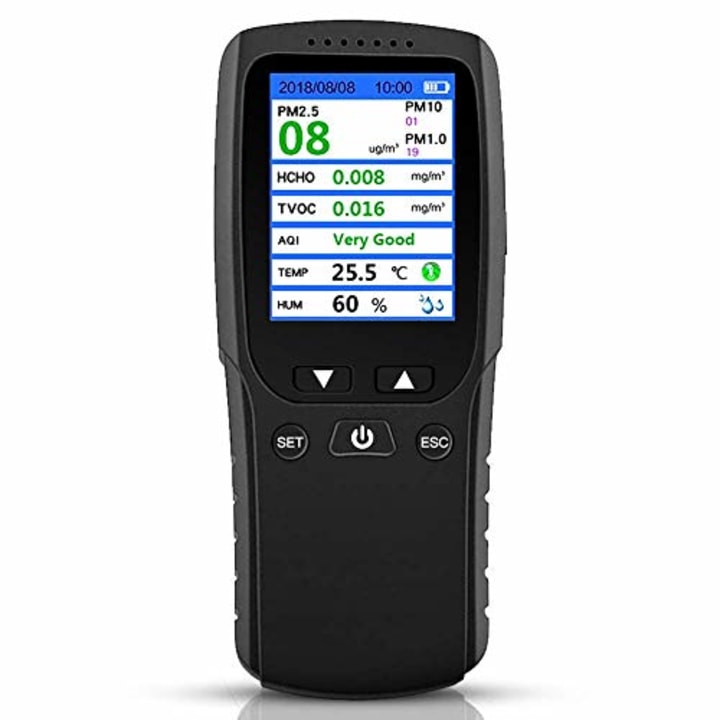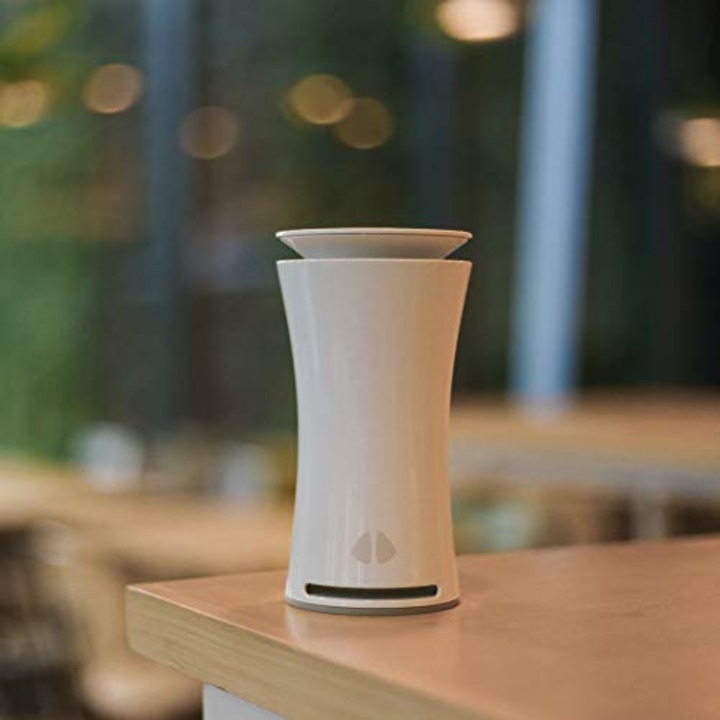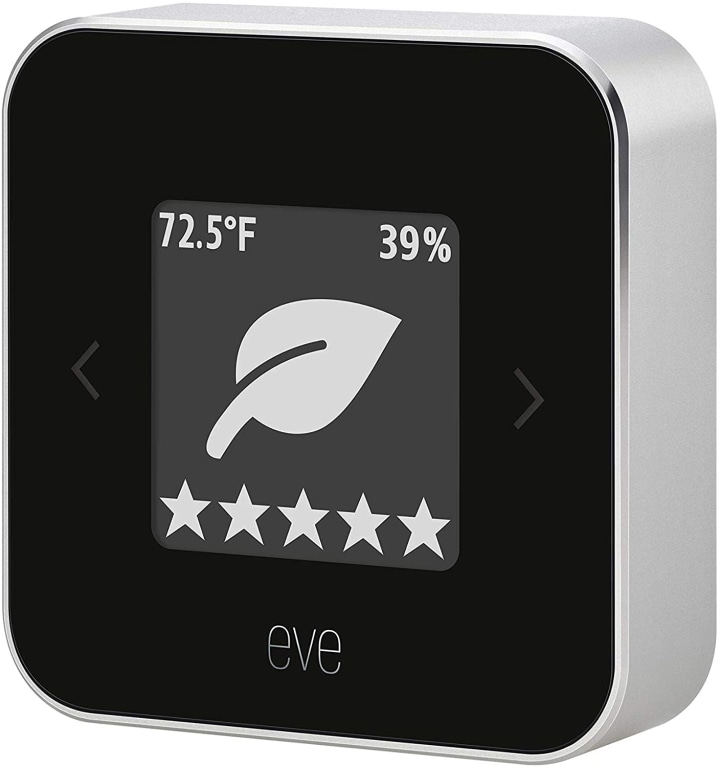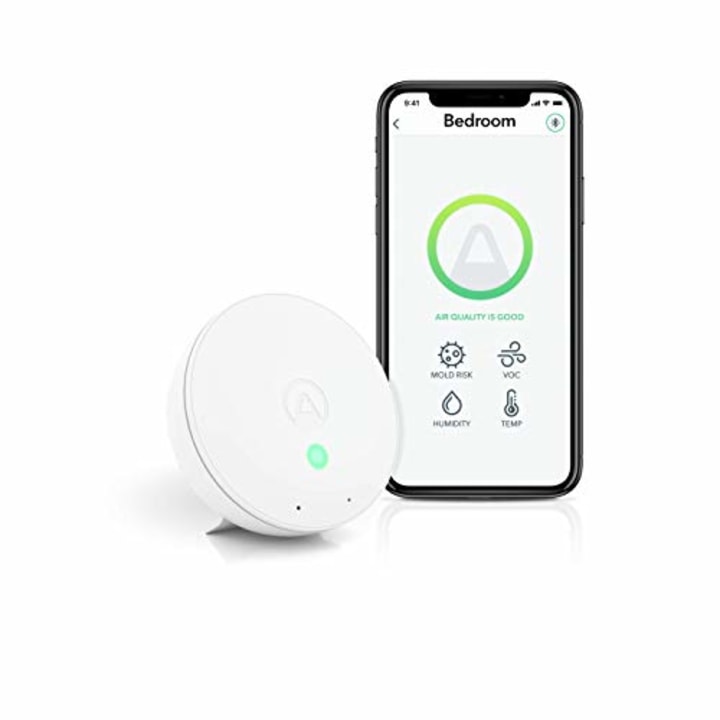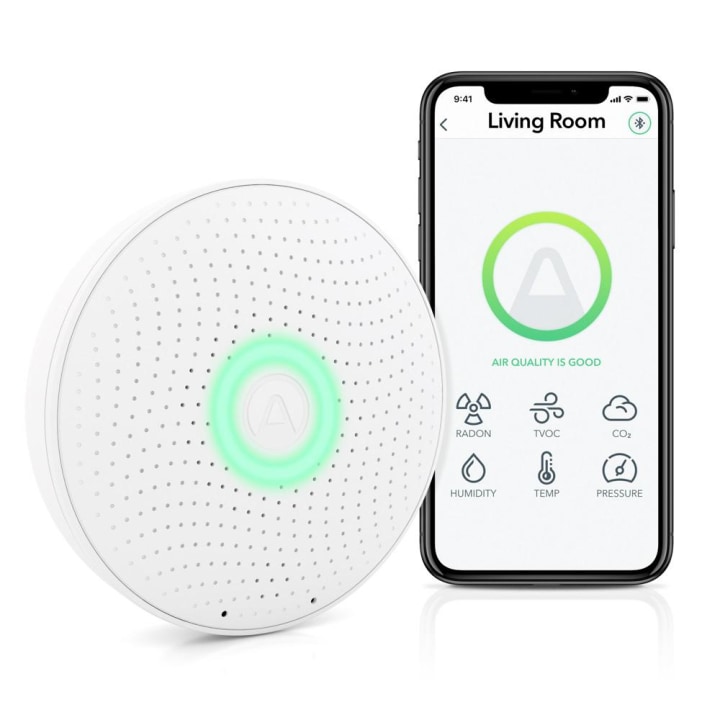Fires are still burning on the West Coast of the United States, and many are understandably concerned with their local air quality. Recently, more than 1,500 acres were consumed by the Glass Fire in Northern California’s wine country. That number grew as more than 36,000 acres of land have been charred, bringing the statewide total to 3.7 million acres burned. Arizona, Oregon, Washington, Nevada and Colorado have also been affected by fires in recent months, and New Yorkers and those living in Virginia could see smoke from those West Coast fires in the skies. Given growing concerns with local air quality, we noticed an increased interest in both air purifiers and air quality monitors. While we previously shared in-stock air purifiers that ship within two days and a guide to Dyson air purifiers, as well as how to shop for air purifiers in the first place, we wanted to help readers learn everything they need to know about air quality monitors. We consulted medical experts in California to figure out what shoppers should know before buying one.
SKIP AHEAD Best air quality monitors
What is an air quality monitor?
An air quality monitor is a device that measures the particulate matter within the air at its location, explained Stephanie Christenson, MD, an assistant professor in the division of pulmonary, critical care, allergy, & sleep medicine at the University of California in San Francisco (UCSF). Reza Ronaghi, MD, a pulmonologist at Ronald Reagan UCLA Medical Center, added that an air quality monitor typically has different meters within it — some have three and others are four — that assess oxygen content, carbon dioxide, carbon monoxide and volatile gasses inside the house. Depending on the meters the air quality monitors equip, they will determine the level for each type of particulate. Based on that data, the air quality monitor can then give you a reading. Ronaghi noted that, typically, the oxygen content level is "great to know" but not essential. Instead, he recommended knowing how much of these volatile gasses, carbon dioxide and carbon monoxide are in the air in your home.
If you do have poor air quality outside, chances are, even if you're able to really seal all of your doors, you do have poor air quality indoors as well, because some of those particles are making their way inside
Reza Ronaghi, MD, pulmonologist, Ronald Reagan UCLA Medical Center
Do you need an air quality monitor?
According to Christenson, if you live in a well-populated area, "you probably can just use the [EPA and Purple Air] websites." If you live in a sparsely populated area where wildfires are common but air quality monitors are sparse, then "it may make sense to have your own," Ronaghi added, noting that "the most important" group of people who should own air quality monitors are people with existing breathing issues or who have underlying lung disease, for two reasons:
- Owning an air quality monitor can help them determine if it's safe to stay inside the house or better go somewhere else for the time being.
- They want to prevent your symptoms from getting worse. Depending on each situation, some people may need to be hospitalized. Of course, if you're concerned about your health, you should consult a board-certified medical doctor.
These monitors are "absolutely" helpful and "very beneficial" for people who are considered healthy. If you know your indoor air quality is poor, then you can try and find (and fix) any openings in your home, as well as decide where to put your air purifier, or determine if you need to relocate temporarily. Overall, Ronaghi noted, anyone with underlying lung disease or breathing problems should consider purchasing an at-home air quality monitor.
Best air quality monitors
The medical experts we consulted didn't want to favor any one at-home brand, the pros noted you can typically find air quality monitors on Amazon, as well as from Apple, Walmart, Home Depot, Lowe's and Best Buy. We rounded up a few of the top-rated air quality monitors from the previously mentioned retailers for your consideration.
Top-rated air quality monitor on Amazon:
1. BIAOLING Air Quality Monitor
This top-rated Amazon pick is an indoor air quality monitor that also displays the temperature and humidity level, and detects dust matter, odor-causing compounds and formaldehyde on an LCD screen. It has a 4.5-star average rating from more than 2,050 reviewers on Amazon. This portable device has a built-in stand so you can test air quality all over your home, car or hotel (once you feel comfortable enough to travel, again, of course). It features a built-in fan, which helps with real-time reporting and auto-calibrates when there's fresh air.
Top-rated air quality monitor at Best Buy
2. uHoo Smart Indoor Air Quality Monitor
Once you connect your uHoo device to Wi-Fi, nine sensors will keep track of your indoor air quality index, including carbon dioxide, ozone, air pressure, toxins and more. The device boasts a 4.6-star average rating from 30 reviewers on Best Buy, and is compatible with smart home devices like Amazon Alexa and Google Assistant.
Air quality monitor at Apple
3. Eve Room Indoor Air Quality Monitor
Although you can read reviews on iTunes for songs and albums, Apple doesn’t show an average star rating on gadgets they smell online. However, given the brand’s popularity, you might want to consider the Eve Room Indoor Air Quality Monitor, which is highly-rated on Amazon, too, where it boasts a 4-star average rating from more than 150 reviewers. The smart gadget displays indoor air quality, temperature and humidity, plus a single USB charge promises more than six weeks’ worth of wireless use. It’s also Bluetooth-compatible, so you connect to your iPad and iPhone, and can access the air quality index indoors by using its companion smartphone app.
Top-rated air quality monitor at Lowe’s
4. Airthings Wave Mini Air Quality Monitor
The top-rated indoor air quality monitor at Lowe’s boasts a 4.5-star average rating from nearly 30 reviewers, and a 4.3-star average rating from more than 40 reviewers at The Home Depot. It features air sensors that help keep track of airborne chemicals, temperature, mold growth and humidity. The device alerts you if action is necessary to clean the air, and uses a color-coded system based on air quality levels. Green is considered healthy, yellow is a warning and red is classified as a danger, according to Airthings.
Top-rated air quality monitor at The Home Depot
5. Airthings Wave Plus Radon Detector and Indoor Air Quality Monitor
Airthings is also a popular purveyor of air quality monitors at The Home Depot, with a 4.7-star average rating from nearly 100 reviewers on this alternative model. Unlike the previously-mentioned air quality monitor, this device also detects radon levels. According to the EPA, radon is a radioactive gas that can cause lung cancer in both smokers and non-smokers. Although neither doctor we consulted discussed radon, the extra feature may offer you additional peace of mind if you’re both willing and able to spend more than an extra $120 for an upgraded model. The battery-operated radon indicator and air purifier have six sensors to detect carbon dioxide, volatile organic compounds (VOCs), humidity, temperature, pressure and, of course, radon. The gadget uses a color-coded indicator to determine air quality levels, as well as Bluetooth connectivity to help you stay in the loop using your iPhone or Android device.
How to check the air quality in your home
When dealing with wildfire smoke, Ronaghi advised the first thing you should do is to check with your local fire, health and news websites to get an idea of the air quality outside. Of course, if there’s a fire nearby, or in your home, dial 911 and leave your residence as safely and swiftly as possible. The Occupational Safety and Health Administration and the American Red Cross both suggest that you follow your evacuation plan, and if you don’t have one in place, take some time to think through an emergency preparedness plan, just in case.
Christenson also advised checking the EPA's AirNow website and air quality control monitoring group Purple Air. She noted that AirNow provides hourly data from government-monitored-and-calibrated sensors. While Purple Air, on the other hand, provides readings from commercially available but lower-cost and unofficial sensors that people can put outside their homes, the air quality is monitored in real-time. "While not as good as the AirNow sensors, there are definitely more of them so they can give you a ballpark of air quality in your area," she said. Christenson, a resident of San Francisco, added that her “favorite” way to keep tabs of her local air quality is to consult both AirNow and PurpleAir because “there are many air quality monitors being tracked” on multiple sensors in that metropolitan area.
Even if someone gets their hands on an air quality monitor, Ronaghi noted, they still need to be aware of the outdoor air quality. "If you do have poor air quality outside, chances are, even if you're able to really seal all of your doors, you do have poor air quality indoors as well, because some of those particles are making their way inside," he said. Ronaghi advised that you actively compare your indoor air quality level to your outdoor air quality level. Why is this comparison so essential? It's an extra step to help determine if your air purifier is working effectively and can help you figure out if there are any openings in your home you may be unaware of.
The "majority of meters" should be able to detect smoke, Ronaghi said. Smoke is composed of carbon dioxide and monoxide, and sometimes volatile gases, depending on what is burning. However, if you're hoping that your air quality monitor will help with mold detection, you're better off shopping for a mold detector device, instead, he added. Of course, there are exceptions: We found a top-rated option that detects both mold and indoor air quality levels.
What is the U.S. Air Quality Index (AQI) and how does it work?
The AQI is how the EPA reports on air quality. The higher the number of the air quality index, the poorer the AQI value is considered. The EPA has a color-coded chart categorizing levels of concern with colors alongside respective air quality index values and simple descriptions of the state of the air.
- 0 to 50: A green AQI color is “good,” meaning "air quality is satisfactory, and air pollution poses little or no risk."
- 51 to 100: Yellow is moderate, the EPA defining this level as "acceptable." "However, there may be a risk for some people, particularly those who are unusually sensitive to air pollution."
- 101 to 150: Orange is unhealthy for sensitive groups. The EPA said the general public is less likely to be negatively affected by this air quality level than those in sensitive groups.
- 151 to 200: Red is unhealthy, and sensitive groups might deal with "more serious health effects," while some healthy patient populations may experience health effects.
- 201 to 300: Purple is very unhealthy and there's an increased risk of health effects in all populations, not just in sensitive groups.
- 301+: Maroon is hazardous and is classified as a "health warning of emergency conditions" that could impact everyone in the area.
More shopping guides and recommendations
- Otterbox now sells PhoneSoap UV sanitizers
- Coronavirus shopping: Amazon face masks
- Best vacuums according to cleaning experts
Catch up on the latest from NBC News Shopping guides and recommendations and download the NBC News app for full coverage of the coronavirus outbreak
